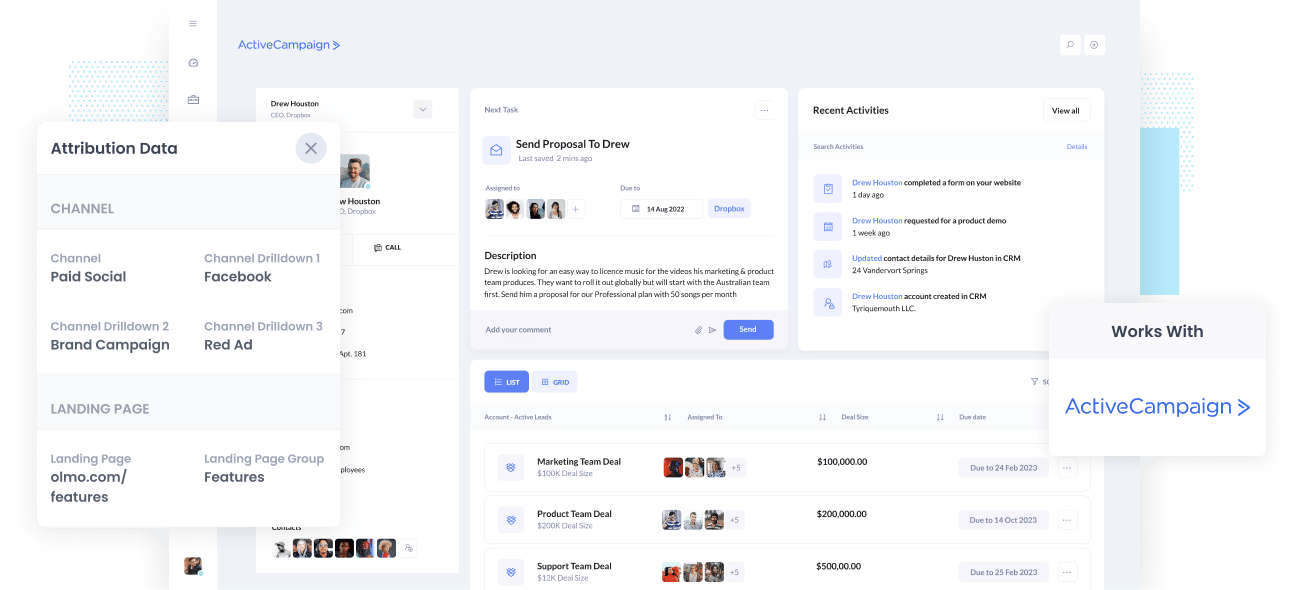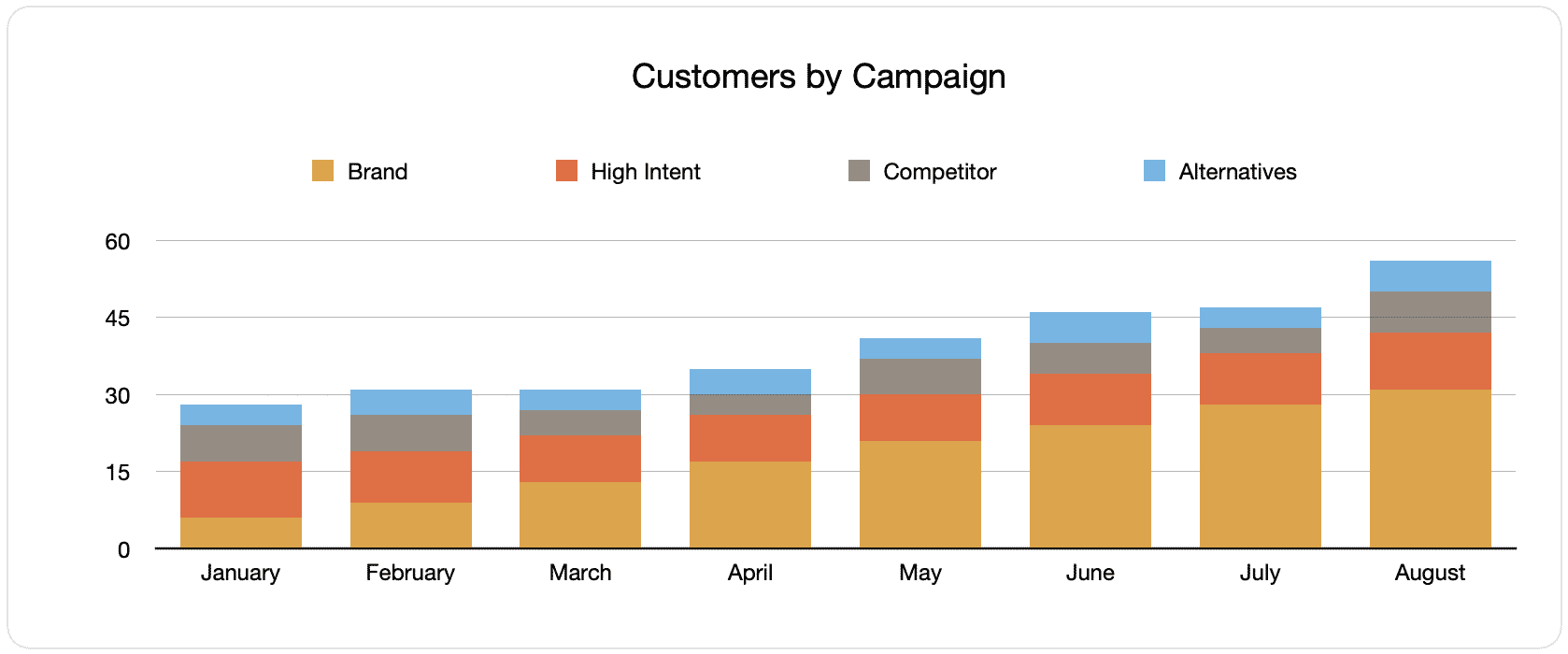The best way to track Facebook Ads in ActiveCampaign
Track how many leads, opportunities & customers you're getting from your Facebook Ads by following these 4 simple steps.

Are you having difficulties trying to figure out the number of leads, sales opportunities and customers you got from your Facebook Ads?
If so, you could be failing to take advantage of growth opportunities for your business. If your Facebook Ads are actually producing customers at a positive ROI and you don’t know it, you’re likely missing out on an opportunity to scale your business.
Conversely, suppose your Facebook Ads aren’t generating customers at a positive ROI. In that case, the fact that you have no idea could mean you’re likely wasting precious marketing budget that could be spent elsewhere.
Good thing there is a solution.
In this post, we’ll walk you through how to use Attributer to track your Facebook Ads’ performance in ActiveCampaign.
What is Attributer?
Attributer, in its simplest form, is a snippet of code you place on your business’s website.
Each time a visitor arrives on your site, Attributer goes through several bit of technical data to understand how the visitor got there. These are the same things tools like Google Analytics look at. Then using this data, Attributer will determine the origins of the visitor.
The visitor is then sorted according to a series of marketing channels like Organic Search, Paid Social, Paid Search, etc., and this data is saved in a cookie in the user’s browser.
Then once the visitor completes a form on your site, Attributer passes the attribution data into the hidden fields in your forms and it is passed to your CRM (such as ActiveCampaign), billing platform, analytics tools, etc.
This data can then be used to build reports that provide information on things like:
- The number of leads you get from your Facebook Ads and how this compares to your other channels like Google Ads, SEO, etc.
- The amount of Opportunities generated from your Facebook Ads and which of your campaigns produces the most opportunities.
- The number of Closed Won Deals/Customers made from your Facebook Ads and the close rate of Opportunities from Facebook Ads vs. other sources.
- The overall revenue created from your Facebook Ads and the ROI (Ad Spend vs. Revenue Generated).
4 simple steps to track your Facebook Ads in ActiveCampaign
Setting things up to start tracking your Facebook Ads in ActiveCampaign is easy with Attributer. Here’s how:
1. Install Attributer on your website

After signing up for a 14-day free trial of Attributer, you’ll receive a small piece of code to place on your website. Instructions on how to do this can be found here, but you can basically add it directly to your site through the Settings section or use tools like Google Tag Manager.
Once the code is active on your site, you must add a couple of hidden fields to theforms you use on your site to capture leads. The hidden fields you need to add are the following:
- Channel
- Channel Drilldown 1
- Channel Drilldown 2
- Channel Drilldown 3
- Channel Drilldown 4
Adding hidden fields to most form-building tools is simple. You can drag and drop a ‘Hidden’ field type into the form or turn a standard form field into a hidden one via the settings. A guide on how to do this in ActiveCampaign Forms can be found here, or if you use other form tools (like Gravity Forms, Wix Forms, Webflow Forms, etc., then instructions can be seen here.
2. Add UTM parameters to your Facebook Ads

The next step is to add UTM parameters behind your Facebook Ads campaigns.
If you’re unfamiliar with UTM parameters, they’re extra bits of text you add to the end of the URL that you want to send to people from your Facebook Ad campaigns.
So if the page you want to send someone is attributer.io/integrations/activecampaign, then your final URL (with UTM parameters) might look a bit like this:
attributer.io/integrations/activecampaign?utm_medium=paidsocial&utm_source=facebook&utm_campaign=brand-campaign
You can use whatever UTM parameters you want, but we'd generally advise using something like:
- UTM Medium = Paid social
- UTM Source = Facebook
- UTM Campaign = The name of your campaign
- UTM Term = The name of the ad set the ad belongs to
- UTM Content = The specific ad
Adding UTM parameters to your URLs is simple, and there are free tools you can utilize online to help you build them.
3. Attributer writes the Facebook Ads data into the hidden fields on your form

Every time a visitor lands on your site from your Facebook Ads, Attributer captures the UTM parameters and keeps them in a cookie in the visitor’s browser. This prevents the UTM parameters from being forgotten while the visitor browses your site.
When they eventually complete a form on your site, Attributer will place the Facebook Ads data in the hidden fields, and the data will then be captured along with the lead’s name, email, etc., upon form submission.
To demonstrate how this all works, let’s say I’m a marketer at ActiveCampaign, and I’m running ads to promote the ActiveCampaign CRM.
When an individual clicks on one of my Facebook Ads, browses around my site, and submits a form to get a demo, Attributer would place the following data into the hidden fields (depending on what UTM parameters I used):
- Channel = Paid Social
- Channel Drilldown 1 = Facebook
- Channel Drilldown 2 = Brand Campaign
- Channel Drilldown 3 = North America Ad Set
- Channel Drilldown 4 = Green Ad
In addition to capturing the channel data, Attributer also captures and sends through data on the visitor’s landing page (i.e., activecampaign.com/features/contact-management) and the landing page group (i.e., /features).
4. Facebook Ads data is sent into ActiveCampaign

Ultimately, all the Facebook Ads data derived from the UTM parameters is passed into ActiveCampaign together with the lead's name, phone, email, etc.
When the data is inside ActiveCampaign, you can build reports on them using native reporting tools, or if you have a BI tool like Power Bi, Google Data Studio or Tableau, you can use those to run more advanced reports.
Why use Attributer?
Other ways to pass Facebook Ads data into ActiveCampaign are available, so why use Attributer?
Here are a few main benefits:
- Captures other attribution data - In addition to capturing the source of leads from your Facebook Ads, Attributer also captures information on leads who arrive on your site from other channels like Direct, Referral, Organic Social, or Organic Search. With this, you can see where ALL your leads and customers are coming from, not just those from your Facebook Ads.
- Remembers data - Different from most other tools, Attributer can store the UTM parameters in a cookie in the user’s browser. This means that regardless of which page the user submits a form on, the UTM parameters will always be sent through, and you’ll have more accurate data.
- Cleans the data - Attributer was designed to expect inconsistencies in UTM usage, such as utm_source=facebook in some campaigns and utm_source=facebook.com in others. It would assign these leads to the correct channel (Paid Social in this case) despite the inconsistencies, ensuring you have more accurate data.
- Captures landing page data - In addition to capturing Facebook Ads data, Attributer also captures the landing page URL (e.g., https://attributer.io/blog/capture-utm-parameters-salesforce) and landing page group (e.g., /blog). This allows you to view the performance of your content (i.e., your blog).
Example reports you can run
When you're using Attributer to capture Facebook Ads data in ActiveCampaign, you're able to run reports like these:
1. Leads by channel

The above report shows the number of leads you received each month broken down by the channel they arrived at your website from.
This can help you determine the performance of your Facebook Ads relative to your other channels so you can reach a more informed business decision on where to spend your marketing resources. For instance, Google Ads may perform better, so the budget should go there.
2. Customers by campaign

The report above displays the number of new customers produced per month by your Facebook Ads, broken down by the campaign they came from.
This information is beneficial because it helps you understand which of your campaigns are generating the most customers, showing you where you should be investing your budget and your time doing optimization and tests.
3. Revenue by campaign

This report shows how much revenue was made per month broken down by the campaign the customer came from.
This data can be useful in measuring the overall ROI of your Facebook Ads. For example, the graph above shows that $65,000 in new revenue was generated from Facebook Ads in August. If you paid less than this on Facebook Ads and associated agencies, creative, etc., it’s a positive ROI and worth continuing.
Moreover, you can break the data down by individual campaign to see which might be worth investing more in and worth stopping.
Wrap up
Do you think tracking the performance of your Facebook Ads in ActiveCampaign can help you grow your business?
If so, you may want to try Attributer.
It will capture the UTM parameters behind your Facebook Ad campaigns and send them to ActiveCampaign, where you can create reports that tell you which campaigns and ad sets are generating your leads and customers.
Moreover, it will also give you data on leads that come from other channels. This means you can track the source of ALL your leads, not just those from Facebook Ads. Ultimately, this can help you know where to best invest to grow your business.
Have we mentioned that it’s free to get started? Begin your free trial today and experience what Attributer can do for you.
Get Started For Free
Start your 14-day free trial of Attributer today!

About the Author
Aaron Beashel is the founder of Attributer and has over 15 years of experience in marketing & analytics. He is a recognized expert in the subject and has written articles for leading websites such as Hubspot, Zapier, Search Engine Journal, Buffer, Unbounce & more. Learn more about Aaron here.
